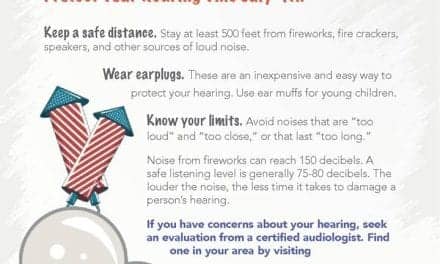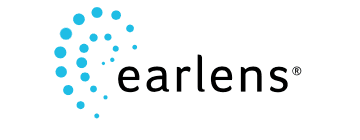Hearing Aids | Winter 2013 Hearing Review Products
The Vent Effect: New Solution ?Addresses Challenges When Fitting ?Custom Instruments
Optivent makes custom hearing aid selection and fitting easier.
By Manuela Eichner, MA, and Carol Meyers, AuD
There’s no question that custom hearing instruments demand more time and attention than their fellow receiver-in-canal (RIC) and behind-the-ear (BTE) siblings. A patient can walk in, receive a hearing evaluation, and be fit with a pair of RIC or BTEs in less than 2 hours. Custom instruments, on the other hand, require taking ear impressions, scanning and sending impressions to the manufacturer, and a subsequent fitting appointment. It’s no wonder that sometimes “in-the-ear” may seem a bit “in-convenient.”
Yet, custom instruments are a vital—even essential—part of hearing care. This should come as no surprise as consumers continue to demand smaller, more discreet, and even invisible-in-canal (IIC) instruments. In fact, a recent survey among US hearing practices grossing $1M+ in yearly revenue revealed 70% of the top overall performing practice’s $2.75M in revenue came from dispensing custom instruments .1
Custom Challenges
Aside from minor inconveniences like taking impressions and additional wait time, fitting custom instruments poses major challenges for the hearing care professional, the manufacturer, and, sometimes, even the patient.
Occlusion. Adequate venting helps lessen the likelihood of the occlusion effect—a common cause of hearing instrument rejection. Unfortunately, it’s very difficult to predict exactly who will suffer from the occlusion effect for a particular vent diameter. This effect can vary by 15 dB or more at different frequencies and among different patients for the same venting scheme.2 Furthermore, if a wearer perceives occlusion, it may be challenging to enlarge the vent based on the amount of “shell real estate” available.
Feedback. Ordering a slightly larger vent isn’t necessarily the answer either. The more open a fitting, the greater the risk of feedback. We know the occurrence of feedback is directly related to the distance between the microphone port and the source of sound leakage. In custom instruments, however, this may be only a few millimeters. Since both occlusion and feedback can lead to hearing instrument rejection, one of the dispensing professional’s primary goals (and challenges) with custom instruments is to strike a balance between occlusion effect (vent too small) and acoustic feedback (vent too large).
Size Matters. But occlusion and feedback aren’t the only concerns. From a cosmetic standpoint, smaller instruments are almost always preferred. For the manufacturer, the challenge has always been to determine how to squeeze all that delicate circuitry into a tiny shell. Over the past few years, flexible designs, solid-state circuitry, and floating components have helped address this issue, yielding smaller, better-fitting instruments.3 But what about vent size? This also must be factored into the manufacturing process. After all, the size of a vent doesn’t just affect the acoustics and audiologic performance of the custom instrument; a larger vent may result in a larger instrument, which may be less acceptable to the wearer.
Low Frequency Amplification. Finally, the clinician also must consider low frequency amplification (LFA). In addition to occlusion, feedback, and overall shell size, the vent size also determines the amount of LFA that effectively reaches the eardrum. The larger the vent, the more power is “lost” through the vent-out acoustic leakage (Figure 1). The acoustic characteristics of the vent-out effect can be easily described by the so-called corner frequency that indicates the beginning of the low frequency roll-off. The hearing care professional also must consider this corner frequency when selecting the correct vent size. Doing so helps ensure there is enough amplification headroom for any current or future low-frequency gain adjustments.

|
| Figure 1. Vent-out effect for various vents. |
To address the above challenges, in the spring of 2013 Siemens introduced the Insio™ family of custom instruments. The goal of Insio was to produce a custom solution that combines superior sound quality with the best possible fit—all in a discreet and cosmetically appealing instrument. It is also the first custom hearing solution built on the powerful micon microprocessor chip. Introduced in the fall of 2012, micon is designed to offer all the best-in-class industry features in one platform, including one of the most advanced feedback cancellation systems,4,5 optimized directionality, noise reduction in 48 channels, and a tinnitus therapy feature. So how does Insio meet the aforementioned challenges (and consequences) associated with choosing the right vent size?
A New Vent That Takes Guesswork Out of Selection
Insio instruments can be manufactured with the new Optivent—a specially designed vent that helps take the guesswork out of vent selection. Optivent maximizes the instrument properties and functionality while minimizing occlusion and feedback. Advanced modeling software allows the manufacturer to build the optimal shape and size of vent, achieving the same acoustical performance (including adequate low frequency gain) as traditionally larger vents (Figure 2).

|
| Figure 2a. Conventional vent. |

|
| Figure 2b. Optivent for the same ear impression. |
For hearing care professionals, selecting the Optivent option is simply a matter of selecting “Optivent” on the order form and submitting along with the patient’s audiogram. Once received, the manufacturer calculates the acoustical mass to develop the optimal vent size for each instrument. The vent is constructed making the best use of available real estate without sacrificing acoustic performance, resulting in a smaller instrument with a high degree of wearer comfort.
Fitting the Hearing Aids
Updated software is designed to make fitting Insio instruments with Optivent extremely easy. Once the new Insio instruments arrive, the First Fit algorithm can be applied based on the individual’s audiogram. As with the BTE family of instruments, Connexx provides the full range of tools to easily fit, verify, and fine-tune the prescribed gain for the Insio custom products.
For Insio instruments, the micon First Fit formula has been optimized to maximize sound quality and effective audibility. This is achieved by carefully modeling the specific acoustics applicable for the selected instrument type. A particular focus has been placed on the microphone location effect (MLE). This curve contributes significantly to the overall acoustic performance.6 As the microphone is placed deeper in the concha, the characteristics of the sound striking the microphone are altered. These differences must therefore be accounted for in the fitting software. In addition to the MLE, all other acoustically relevant factors, such as RECD, critical gain, etc, are carefully measured for each instrument type and considered during the simulation.
For Insio instruments ordered with Optivent, the correct equivalent acoustic mass (EAM) is stored in the instrument, and read out by Connexx for the correct acoustic modeling. For Insio instruments ordered with a conventional vent, the vent size is also stored in the instrument and automatically read by Connexx, allowing the hearing care professional the flexibility to make adjustments to individual fittings as needed. The fitting of the Insio instruments itself follows the same rationales and workflow as the BTE instruments.7 This way, fitting all micon instruments is an easy and consistent process.
Conclusion
Every step in the hearing instrument fitting process contributes to the final success, from initial counseling and instrument selection to the final fitting and fine-tuning. This is especially true with custom hearing instruments, where personalization is often tied to customer satisfaction.3 Because a successful custom instrument fitting allows little to no room for error, hearing care professionals and hearing instrument manufacturers must work hand-in-hand.
The Insio solution helps meet these objectives by combining micon, Siemens’ latest BestSound Technology™ platform, with innovative manufacturing, engineering, and design. The new Optivent feature provides a simple means to optimize Insio custom instruments while simultaneously addressing four major challenges faced when fitting custom instruments:
1) Minimize the occlusion effect;
2) Reduce the risk of acoustic feedback;
3) Create the smallest possible shell; and
4) Allow sufficient headroom in the low frequencies
Optivent was made possible thanks to technological advancements in manufacturing, fitting software and 3D modeling. As technology continues to improve, so will the size, accuracy, and first-fit of custom hearing instruments.
The result? Less time and attention focused on the instrument itself and more on the patient. As patient acceptance of custom instruments continues to increase, perhaps one day “in-the-ear” will be a lot closer to “in the bag.”
References
1. Gleitman R. Examination of the AOR benchmark practice management study. Hearing Review. 2013;20(08):26-31.
2. Mueller HG, Bentler RM, Ricketts TA. Modern Hearing Aids. 2014 San Diego: Plural Publishing;2014.
3. Branda E. Advances in customization: Giving consumers exactly what they want. Hearing Review. 2012;19(06):26-31.
4. Powers T, Beilin J. True advances in hearing aid technology: What are they and where’s the proof? Hearing Review. 2013;20(01):32-39.
5. Froehlich M. micon Feedback Cancellation. Piscataway, NJ: Siemens 2012. Available at: http://hearing.siemens.com/Resources/Literature/_Global/publications
6. Mueller HG, Hall JW. Audiologists‘ Desk Reference, Volume II. 1998: San Diego: Singular Publishing Group Inc;1998.
7. Fischer R-L, Pape S, Giese U, Dressler O. micon fit: Striking the balance between sound quality and audibility. Piscataway, NJ: Siemens, 2012. Available at: http://hearing.siemens.com/Resources/Literature/_Global/publications

CORRESPONDENCE can be addressed to Manuela Eichner at: [email protected]
Citation for this article: Eichner M, Meyers C. The vent effect: New solution ?addresses challenges when fitting custom instruments. Hearing Review Products. 2013; Winter: 12-13.





